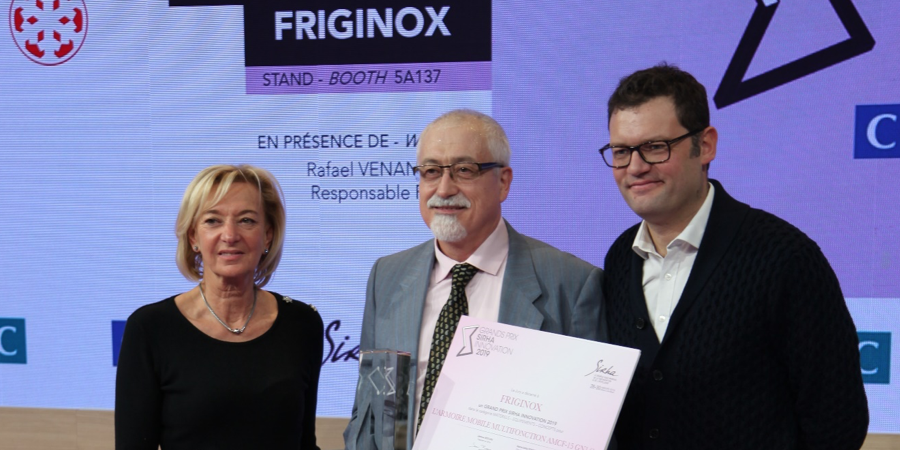
What's senior leaders' standard work in a lean enterprise?
RESEARCH - Standard work is not meant for senior leadership, but there are activities that CEOs can carry out systematically to support a lean management system, starting from problem solving.
Words: Michael Ballé, Lean Institut France; Denise Bennett, City of Melbourne; Peter Handlinger, Turnstone Group
“What does standard work for CEOs look like?” is a question we were often asked during our recent gemba walks in South Africa. It’s a strange one because standard work was invented, first and foremost, to help operators distinguish good work from bad work – for each action in a sequence, and always from the customer’s point of view.
It is hard to see how it can apply to senior leaders, who work at a completely different level (and should always retain the flexibility of an open mind).
A leader’s job is to lead, which means to help people to change for the better. If the water hole is dry, the leader must take the tribe to the next one. If game becomes scarce, the leader must lead the shift to growing crops instead. A leader’s role is to first figure out what to do to prosper in adverse, changing conditions and then get people to follow. To this, standard work does not really apply.
Still, in a certain sense there are activities in which leaders can and should follow high-level standards:
- Problem facing: whether because of a burning platform or an inborn desire to improve, leaders must face business challenges, which demands both courage and creativity (as well as a large amount of persistence and relentlessness).
- Problem finding: leaders must then seek and find the right opportunities to respond to those challenges. In practice, this means recognizing the business opportunity in what others consider a normal situation, such as the finished goods warehouse (why are we producing before knowing customer’s demand?), the final inspection and rework area (why can’t we make a product right first time?), and so on. Problem finding is the main point of lean thinking. Our aim is not to be more efficient, but be more effective: doing the right things well.
- Problem framing: once the opportunity is identified, leaders must find a clear way to frame it so that everyone can agree on which problem they’re trying to solve. Problem framing is the skill of making people converge on a few simple objectives. Lean has a very long tradition of problem framing at the workplace through its visual control techniques that express the general problem in specific, intuitive ways and right at work level.
- Problem solving: clearly, once the problem has been correctly framed and people understand what they’re expected to do, they must be trained and supported to solve it in a way that actually realizes the opportunity identified in the first place.
The end result of problem facing, finding, framing and solving is real change in the form of specific change points, which move our processes from one way of operating to another, which performs better. As changes are built on everybody’s understanding of a challenge, how we intend to address it and how we work at it every day, they are both effective and lasting. Overall, they transform the company change point by change point.

Calling all the above standard work for senior leaders might be somewhat extreme. However, the work practices that lean management promotes are rather specific and, if push comes to shove, leaders’ “go and see” walks can be broken down into four specific skills:
- Look for further service improvement or cost reduction opportunities (problem finding): where can quality or delivery be improved? Where can cost be reduced (as opposed to cost cutting)? For instance, do we really need this warehouse to store finished good, or can we imagine shipping straight from the production line? How much would closing, selling, or using the warehouse for production add to the bottom line? The first skill that a leader can continuously improve is seeing the business opportunity in the current state of operations.
- Improve visual control (problem framing): operators shouldn’t have to worry about executive business issues – they’re not paid enough for that (leaders are). Visual control is about translating the business problem in an intuitive, visual way so that any team member can immediately grasp what he or she should aim for. A truck preparation area, for example, has people focus on preparing the truck for shipping, on time and according to certain specifications. A production analysis board will have minds focus on production output and what obstacles can be encountered. Kanban cards represent takt time, and so on. Visual control is essentially about physically representing planned against actual, intended against real, and asking “why the gap?” It is a skill that is unique to lean and that needs to (and can) be learned. Whatever the level of visual control in operations, it can always be improved: be more specific, be more intuitive, so people feel more confident in what they have to do.
- Improve specific skills (problem solving): good visual control will typically reveal that some products are easy to make (or some treatments easy to administer) while others are hard. Some operations are easy to complete (and have low impact on the product’s overall quality), while others are delicate and can have a large impact on the end result. When things prove hard, we often find a gap in the specific skills sets of the people doing the work. For instance, all too often maintenance personnel are not well trained to order the correct spare parts just-in-time (they’re better at ordering just-in-case). Once a specific skills gap is identified, the next obvious step is to organize on-the-job training, and then train some more. And then some more.
- Improve processes (sustainable change): the magic of improving skills sets is that people who are more skilled and collaborate with others will come up with easier, better, faster, and cheaper processes as soon as you get them to do kaizen together. For instance, if nurses in a hospital ward get better at organizing their storage rooms and if logistics staff get better at delivering more frequently to the ward, sooner or later you can radically change the inventory policies of the hospital and radically reduce the risk of out-of-date drugs or overstocking. The bad mistake many managers make is to try and improve the process before building up team members’ skills, with dismal results and further loss of personal confidence and mutual trust.

Problem facing remains the foundation of all progress. Do leaders actually face their challenges? Do they do so purposefully (with what we call will power) and creatively (with what we call way power)?
If the will is there, the rest is a matter of skill. And these skills are just like any other: no one is born with them and they must be learned and honed through constant practice on the shop floor. To some, this becomes second nature, as brilliantly exemplified by Art Byrne’s wonderful book The Lean Turnaround (after 30 lean turnarounds, you sort of know what you’re doing). Others have to learn them from scratch and need the help of a good sensei.
If that’s all there is to it, why all the fuss? And why aren’t more leaders doing it?
Because, unfortunately, nothing is ever quite so simple when dealing with human beings.
Many middle and frontline managers will resist visual control because they immediately see how it will increase their workload. Furthermore, they don’t feel very confident in their own ability to solve every problem visual control will throw at them, or to train their own staff in doing it. Lean thinking brings in a major change for managers: training their direct reports becomes their number one responsibility.
The first issue (fear of an increased workload) can be solved by supporting kaizen through challenging people, setting up visual control, developing skills and looking for process improvement.
The second issue is one of respect: we need to acknowledge the middle managers’ lack of confidence in their ability to solve problems (particularly those involving other departments), train their people or support kaizen.
The lean response to this is the creation of an oobeya (a “war room”) where, first of all, we post the business’ main performance indicators on a wall: safety, quality, lead-time, cost, and so on. In a hospital setting, these indicators would typically include patient incidents, staff incidents, patient satisfaction, nosocomial infections, patient readmissions, length of stay, nursing time at patient bedside, and so on.
With the KPIs agreed upon (they’ll differ from place to place according to the overall challenge of the organization), the leader can create a university: every week, a member of the management team will present a PDCA report to the rest of the team on how a small, specific problem relating to a general indicator was solved:
- Plan: What was the local indicator we tried to improve and by how much did we try to improve it? 2) How did we understand the problem? and 3) How did we intend to go about it?
- Do: 1) Who needed to learn what in order to achieve the plan? What was the training schedule like? How far did we go and what barriers did we encounter?
- Check: 1) Where did it work (which were the easy cases)? 2) Where did it not work so well (which were the hard cases)? How to explain the difference?
- Act: 1) What new practices/processes should we adopt? 2) What practices/processes should we adjust? 3) What practices/processes should we abandon in order to truly move forward (often the hardest part)?
If these “university” presentations occur regularly, managers will gain confidence in their ability to solve problems, to discuss these with their colleagues, and to train their own direct reports in a similar way.
Beyond the need for regularity and persistence, there are two tips we can take from Toyota here:
- Make sure that problems are specific (small and local and not system-wide) so that they can be treated fully. The aim there is not to improve the overall indicator but to delve deep into problems that make the indicator what it is. The lean assumption is that “to understand is to act,” so our focus is on understanding, not deploying.
- The presentations must be kept short – these are reports out, not discussions (discussions with other colleagues will occur in the process of problem solving). One Toyota practice is very useful to keep reports short: after a 20-minute report, each member of the team is asked to make an on-the-spot improvement suggestion. The person making the report jots them down but does not respond (to avoid knee-jerk defensiveness and endless discussions). The leader then chooses one improvement comment and asks the presenter to dig deeper in that direction.

This second element of the “go and see” workplace practice is essential to move forward: you cannot do kaizen without respect, and you cannot show respect without kaizen. Hopping on one foot will eventually lead you to stumble.
We saw the effectiveness of this approach during our visit to Toyota’s South African plant, where an A3 sheet clearly showed the various steps of the value chain, as well as:
- A presentation of the problem area;
- The quantitative trend;
- The sequence of 1x1 change points;
- Which problems were still encountered on each change point;
- Next changes envisaged.
This simple A3 document summarized the whole progress of one line in a specific, concise, step-by-step way and described the path taken, not just the results achieved. Both the journey and the outcome matter equally.
Given the level of pressure and reliance placed on leaders, formulating any standard work for them might sound over-simplistic. Leaders must manage hearts, minds and hands. They must deal with politics as skillfully as they must solve technical problems. They must consider every person and analyze every situation as unique.
However, we believe there are some specific skills that leaders can learn to deepen their understanding of lean management, to change others by changing themselves through daily practices, and to transform their organizations. As the African proverb goes: If you want to go fast, go alone; if you want to go far, go together. “Go and see” practices and problem solving are specific skills we can use to go far, together.
THE AUTHORS



Read more


FEATURE – When faced with a crisis, like the current one, it is natural to wonder, “Why bother?”. Yet, this is when we most need a growth mindset and a framework like lean thinking to figure out a way forward.


FEATURE – Designing beautiful work helps design beautiful clothes. Here’s the story of how women’s clothing brand Eileen Fisher found in lean a way to support its environmental sustainability strategy.


INTERVIEW – Lean for social good may sound new to many, but to the CEO of one of America’s largest food banks, the partnership between her organization and Toyota to defeat hunger in the Big Apple seems just natural.


NOTES FROM THE GEMBA – This French company has completely transformed its approach to designing and introducing new products to market by embracing lean product development ideas.

